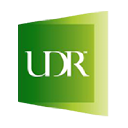These terms and conditions govern your use of the website alphaminr.com and its related
services.
These Terms and Conditions (“Terms”) are a binding contract between you and Alphaminr,
(“Alphaminr”, “we”, “us” and “service”). You must agree to and accept the Terms. These Terms
include the provisions in this document as well as those in the Privacy Policy. These terms may
be modified at any time.
Subscription
Your subscription will be on a month to month basis and automatically renew every month. You may
terminate your subscription at any time through your account.
Fees
We will provide you with advance notice of any change in fees.
Usage
You represent that you are of legal age to form a binding contract. You are responsible for any
activity associated with your account. The account can be logged in at only one computer at a
time.
The Services are intended for your own individual use. You shall only use the Services in a
manner that complies with all laws. You may not use any automated software, spider or system to
scrape data from Alphaminr.
Limitation of Liability
Alphaminr is not a financial advisor and does not provide financial advice of any kind. The
service is provided “As is”. The materials and information accessible through the Service are
solely for informational purposes. While we strive to provide good information and data, we make
no guarantee or warranty as to its accuracy.
TO THE EXTENT PERMITTED BY APPLICABLE LAW, UNDER NO CIRCUMSTANCES SHALL ALPHAMINR BE LIABLE TO
YOU FOR DAMAGES OF ANY KIND, INCLUDING DAMAGES FOR INVESTMENT LOSSES, LOSS OF DATA, OR ACCURACY
OF DATA, OR FOR ANY AMOUNT, IN THE AGGREGATE, IN EXCESS OF THE GREATER OF (1) FIFTY DOLLARS OR
(2) THE AMOUNTS PAID BY YOU TO ALPHAMINR IN THE SIX MONTH PERIOD PRECEDING THIS APPLICABLE
CLAIM. SOME STATES DO NOT ALLOW THE EXCLUSION OR LIMITATION OF INCIDENTAL OR CONSEQUENTIAL OR
CERTAIN OTHER DAMAGES, SO THE ABOVE LIMITATION AND EXCLUSIONS MAY NOT APPLY TO YOU.
If any provision of these Terms is found to be invalid under any applicable law, such provision
shall not affect the validity or enforceability of the remaining provisions herein.

